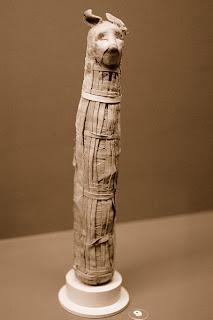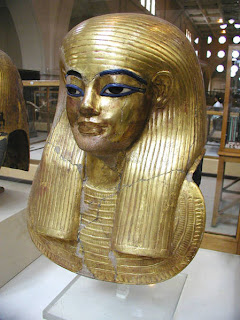In The Aten Sequence Books the main character Aten sends Luke and Neferptah to be educated with Prince Dhutmose and other noble boys in an educational institution called the ‘Kap’, situated in the royal place. But what was life really like for a schoolboy in Ancient Egypt? What were they expected to learn and how were their lessons taught?
What was it like to be a schoolboy in Ancient Egypt? Formal education was mainly reserved for the upper classes and boys from wealthy families would begin their schooling around the age of four. They would be trained in all the skills they would need to follow in their father’s footsteps. A boy’s future occupation was decided by his family and they usually entered the same profession as their father. Many important positions at Pharaoh’s court and in the major temples were handed down from father to son for many generations. The Ancient Egyptians were also a very practical people, so children were taught only the subjects and skills that would be relevant in their later career.
 |
| Child Working in Garden - Tomb of Menna |
Literacy was mainly confined to the ruling classes such as courtiers, state administrators, senior members of the priesthood, and important army officers. The artisans at the workmen’s village at Deir el-Medina who worked on the royal tombs in the Valley of the Kings and the mortuary temples of the west bank could also read and write and, most unusually for the ancient world, there is evidence that some of their wives and daughters were also literate. These workmen needed literacy skills as they had to accurately carve or paint texts onto tomb and temple walls from papyri or ostraca. Any Egyptian who was literate was known as a ‘scribe’ and the ability to read and write was so highly valued that many important courtiers and officials had statues carved that depicted them as scribes with a roll of papyrus stretched out across the knees.
School started early in the morning and would generally take place at the teacher’s house. Boys were required to bring their own lunch and would pack bread and beer to keep them refreshed until the lessons ended at noon. Teachers were very strict and the lessons would be made up of copying from old hieroglyphic texts and memorising passages from stories and texts. Papyrus was very expensive, so students would practise their writing on fragments of limestone called ostraca or pieces of broken pottery. If the teacher thought a pupil was being lazy, was caught sleeping in class or had been disruptive, then the punishment could be harsh as they would be beaten across the back with a stick. Arithmetic was also taught but, although texts were recited out loud in order to learn them, all mathematical calculations were done silently and not spoken aloud.
The lessons were very difficult as the students would have to learn both the hieroglyphic and hieratic scripts. Hieroglyphics were the formal version of the script and were used in tombs, on temple walls and on the possessions of royalty and important noblemen. Hieratic was developed around the same time as the hieroglyphic script and was a simplified version that was used for more mundane purposes such as keeping accounts, making records and private correspondence. There were many different hieroglyphic signs to learn, over 700, all of which were consonants. There were no vowels, and the grammar was also difficult.
When writing in English we write from left to right across the page, but Egyptian schoolboys could right from top to bottom or across the page. If writing across the page, the text could be started from either the left or right. The way they would know which way to read the text was to look at which way the animal, bird or people signs were facing; if they were facing right, the text was to read from right to left. Writing was regarded as sacred by the Ancient Egyptians as they believed it had been given to them by the gods, so texts had to be perfect, with no mistakes and neatly presented. The schoolboys would use brushes made from reeds to do their work, which they would dip into either black or red ink. The ink, along with the reed pens, was stored in a pallet that was generally made from wood, although more elaborate ones were crafted in ivory or gilded. Black ink was made from soot and water and other colours were made from mixing water with ground up minerals.
Physical education and military training did not really come to the fore until the time of the New Kingdom when the army came to more prominence and senior army officers began to wield great power in the ever growing empire. Young royal princes and scions of the nobility were brought up and educated in an institution called the ‘kap’ or the Royal Nursery. The ‘kap’ was part of the royal palace and having been a ‘child of the kap’ conferred a great deal of prestige in later life and was often mentioned on the owner’s statues and tomb inscriptions. Foreign princes and nobility were also sent to the Royal Nursery, or brought as hostages, to be educated alongside the future pharaoh. This may have been done to forge strong personal bonds between the crown prince and the young men who would go on to rule the satellite states of the Egyptian empire or to ensure the continuing good behaviour of their fathers. Not all who gained the coveted title of ‘Child of the Nursery’ were from the highest levels of society; some young boys came from relatively humble beginnings, such as the draughtsman Nebseny, although their career prospects were bound to have been boosted from their early proximity to the highest in the land.
 |
| Hieratic Text Copied by Schoolboy |
These privileged young men would have been trained in archery, hunting, chariot driving, swimming and fighting with sticks. Pharaohs had always been portrayed as accomplished warriors and athletes, but by the time of the New Kingdom the heir to the throne was shown and described engaging in amazing feats of arms and athleticism. Most of these images probably portrayed rituals rather than real life events, but the Egyptians doubtless looked up to their kings as physically powerful and fearless fighters.
Parents also taught their children the stories of the gods, religious rituals, ethics and morals. There were texts called Books of Instruction or Wisdom Literature, which stressed desirable precepts such as veracity, treating people fairly, being obedient, leading an ordered life and taking responsibility. The Ancient Egyptians tried to live by the principles of Maat, personified as a goddess, which created prosperity and balance in the country. These principles were harmony, cooperation, justice, truth and decorum. Punishment for not following these ideals was believed to come after death, when your heart was weighed on a scale against a feather of Maat. You would only be allowed to move on to a joyful, prosperous afterlife if your heart balanced the scale. However, if during your life you had murdered, lied or cheated your heart would be too heavy, so it would then be flung to a demon called Ammut to devour and your life would be ended forever.
 |
| Palette of a Scribe |
Children from poorer families started working and being useful from an early age. So you can see images on tomb walls of children helping with the harvest, herding animals, fishing and many other tasks. They would have been trained by a close family member such as their father or uncle, and would have been expected to contribute economically to the household from very early on. Girls were not educated as formally as their brothers, although there is evidence that royal princesses were taught to read and write. However, they would be taught by their mothers how to do all the daily household tasks and maybe also how to sing, dance and play instruments. These skills were especially useful for the girls who went to be a singer or a dancer in one of the many temples.
So the life of an Ancient Egyptian schoolboy was regimented and they were expected to be diligent, respectful and follow the path laid out for them by their family. Much more was expected of them at an early age than would be today, but life expectancy was typically only between thirty and forty. Children had to grow up faster and work hard to make their mark in a world that could be tough and unpredictable.
Hieratic text image Wafulz on Wikimedia Creative Commons Attribution 3.0 Unported
Child Working in Garden - Tomb of Menna image Wikimedia Commons Public Domain
Palette of a Scribe image Wikimedia Commons Public Domain



.JPG)
.JPG)






